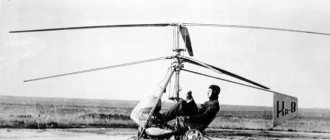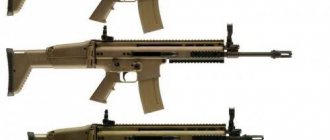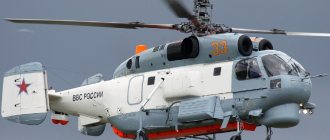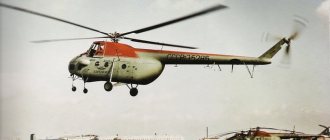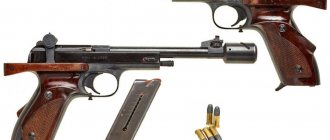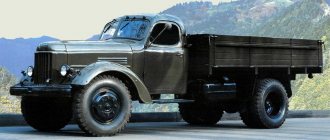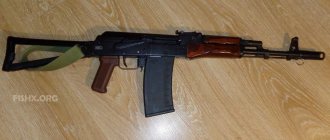Amphibious helicopter
is a helicopter that is designed to land and take off from land and water. Floating helicopters are used for a variety of purposes including specialized air sea rescue, maritime rescue and oceanography, in addition to other tasks that can be performed by any non-amphibious helicopter. An amphibious helicopter may be designed with a watertight or watertight hull like a flying boat, or may be equipped with auxiliary floats in the same manner as a seaplane. [1]
Development[edit]
Helicopters have played a major role in air and sea rescue operations since their introduction in the 1940s. [2] Helicopters can fly in harsher weather than fixed-wing aircraft, and they can transport injured passengers directly to hospitals or other emergency services. A practical amphibious helicopter first appeared in 1941 [3], and the ability to land on water soon proved its worth. Amphibious helicopters were required to hover over the accident site on the water and use a hoist, but amphibious helicopters could land on the water for more direct rescue operations. [4]
Modifications of the Mi-14 helicopter
Since the start of mass production, several modifications of the Mi-14 helicopter have been created:
- Mi-14GP. Utility-passenger modification of the helicopter;
- Mi-14BT. A version of the vehicle that is intended for trawling sea mines. The helicopter is capable of towing various types of contact and non-contact trawls. Moreover, towing can be carried out by one helicopter or two vehicles;
- Mi-14P. A civil modification designed to transport passengers. It can carry up to 24 people. Actively used by oil workers. Actually, according to their order, it was developed in 1995;
- Mi-14PZh "Eliminator". A version of the helicopter designed for firefighting. The basis for its creation was a modification of the Mi-14BT. This machine is the joint brainchild of Russian designers and German specialists. Its special feature is the installation of a water tank in the cargo compartment, which is drained through opening doors. To date, only one machine of this modification has been built. She took part in extinguishing large-scale forest fires in Spain;
- Mi-14PL. PLO helicopter, which is the most popular modification of the machine;
- Mi-14PLM. This helicopter is an attempt to modernize the anti-submarine version. It was planned to install a new anti-submarine complex “Octopus” on it and arm it with “Kolibri” and “Orlan” torpedoes. However, the modification remained on paper, the project was closed;
- Mi-14PW. Modification of the Mi-14PL helicopter, created in Poland.
Installed floats[edit]
In 1941, Igor Sikorsky installed auxiliary floats (also called pontoons) on the Vought-Sikorsky VS-300, creating the first practical amphibious helicopter. [3] [5] In the 1940s and 1950s, some helicopter models, such as the Bell 47 and the Sikorsky R-4 and R-6, [6] were equipped with auxiliary floats to allow them to float. and on the water. Earth. [7]
Pontoons can be filled with air or used to store fuel or supplies. In 1949, Sikorsky produced the H-5H with both wheels and pontoons. [8]
Boat hull design[edit]
A Canadian Air Force CH-124 Sea King displays the boat's hull, sponsons and wheeled landing gear.
The Sikorsky S-62 Seaguard was the first amphibious assault helicopter made with a flying boat hull—the prototype flew in 1958. [9] Using many components from the earlier S-55, the S-62 proved the idea, and Sikorsky flew their S-61 Sea King prototype in 1959 for US Navy, model designed for anti-submarine warfare. [10] Both the S-62 and S-61 were ready for delivery in 1961. Sikorsky produced 1,100 S-61s, including some that were not waterproof: the longer cargo version received rear doors and a ramp. Sikorsky licensed other manufacturers such as Agusta, Mitsubishi and Westland to produce S-61 variants. [eleven]
Amphibious helicopters came into their own in the 1960s, when rugged boat-hulled designs were produced in large numbers for military and civilian operators. Amphibious helicopters paid dividends for rescuers who enjoyed greater safety and success during operations. [4] Surface operations that used non-amphibious helicopters relied heavily on hoists, rescue baskets, and rescue swimmers. [4] However, beginning in the 1970s, amphibious models were steadily replaced by helicopter models, which were unable to land on water due to the high costs of developing amphibious aircraft. [4] The last amphibious helicopter model used by the US Coast Guard was the Sikorsky HH-3F Pelican, retired in 1994. [12]
When on the surface of the water with the rotor stopped, in harsh wind conditions and rising surface waves, a helicopter with a boat hull and stabilizing floats on both sides is less likely to remain upright than a non-vessel helicopter with general purpose pontoons. [13] Lifting may be difficult, especially under heavy loads or in rough seas.
Mi-14PL Polish Navy
The Mil Mi-14 has the same boat hull design as its competitor, the US-made Sikorsky S-61R.
The Canadian Forces developed a technique called waterbirding for landing its CH-124 Sea Kings in the water.
Description of the Mi-14 design
The helicopter is manufactured according to the classical design with one main rotor and one tail rotor. It has a four-wheel retractable landing gear, and the vehicle's power plant consists of two gas turbine engines. The Mi-14 crew consists of two pilots and two equipment operators.
The Mi-14 was created on the basis of the Mi-8 airborne transport, so the upper part of the body of these two helicopters is almost similar. But the lower part of the amphibious helicopter has significant differences: the bottom is made in the form of a boat with well-defined cheekbones, fairings, and to increase buoyancy there are two inflatable ballonets with a volume of four cubic meters.
The helicopter has a five-bladed rotor with hinged blades. Three-bladed tail rotor with variable pitch.
The front part of the hull is occupied by the cockpit, behind which is the cargo compartment, which occupies the main part of the hull. Unlike the Mi-8, the Mi-14 helicopter does not have a rear cargo hatch, but it does have a small hatch for a magnetometer. The radar station is located in the nose of the helicopter. In the anti-submarine version of the helicopter, the cargo compartment contains search equipment, winches for lowering the magnetometer and sonar station, as well as torpedoes and depth charges. In the search and rescue modification of the helicopter, the cargo compartment is equipped with places for victims.
The Mi-14 power plant includes two TVZ-117M gas turbine engines, as well as cooling systems, fire protection, engine starting, fuel supply, etc. The take-off power of each engine is 2 thousand hp. With.
The helicopter's fuel system consists of six tanks, their total capacity is 3350 liters. If necessary, another additional tank of 500 liters can be installed in the cargo compartment.
The Mi-14 has a four-leg retractable landing gear, consisting of two front and two main struts. In addition, a non-retractable support is located on the tail boom. The front struts retract forward into the fuselage niches, and the main struts retract back into the fairings.
If we talk about the anti-submarine modification of the Mi-14, then to perform its functions it is equipped with: the Initiative-2 radar station, the APM-60 magnetometer, the Oka-2 hydroacoustic station, the R-842M radio stations (HF range) and R- 860 (VHF band), radio altimeter RV-Z, radio compasses ARK-9 and ARK-U2, Doppler meter DISS-15 and autopilot AP-34B.
In addition, the complex of anti-submarine equipment also includes the “Lily of the Valley” sighting and computing device, the “Snegir” data transmission system, and “Float” buoys. The automatic control system of the SAU-14 allows the helicopter to hover over one point.
The Mi-14PL can carry twelve 50 kg bombs or eight 250 kg bombs, the total bomb load is 2 thousand kg, as well as one AT-1 torpedo. Instead of torpedo-bomb weapons, acoustic buoys (36 RSL-NM Chinara) can be loaded on board. Weapons can be placed both inside the cargo compartment and on external slings. The anti-submarine Mi-14 is capable of carrying the Scalp depth charge with a nuclear warhead. Its mass is 1600 kg, and its power is 1 Kt.
As a rule, Mi-14 anti-submarine helicopters operate in pairs: one vehicle carries a set of equipment for searching for submarines, and the second carries a torpedo and depth charges.
Limited water capacity[edit]
Helicopters may be designed to withstand limited contact with the surface of a body of water. The 1958 Vertol HUP-2 was an amphibious development of the twin-rotor Piasecki H-25, which strengthened the hull and replaced the lower nose windows with durable aluminum. [14] HUP-2 was equipped with a pair of outrigger stabilizing floats located amidships. HUP-2 could steer forward or backward through the water, regardless of wind direction. [15]
Helicopter HUP Retriever land on water
The CH-46 Sea Knight and its Canadian variant, the CH-113 Labrador, can land and rest for up to two hours [16] in calm waters. [17] The rear sponsons contain two of the three landing gear, as well as pressurized fuel tanks. The helicopter entered service with the United States Marine Corps in 1962 [16] and the Canadian Forces in 1963 and is used for cargo transport and combat operations.
Sikorsky Sea King with an additional inflatable emergency float outside the standard sponson, designed to increase buoyancy time.
The Boeing CH-47 Chinook was made waterproof enough to allow it to land on water for short periods of time during covert operations and special military missions. Buoyancy was increased by pressurized compartments within the sponsons, which extended most of the way along each side of the fuselage. For long-term water use, Boeing has offered a waterproofing kit. [18] The Sikorsky CH-53 Sea Stallion, first introduced in 1966, can also land in restricted water.
Current situation
After the collapse of the Soviet Union, most Mi-14s went to the Russian Federation. In 1992, a decision was made to remove this helicopter from service. It is not difficult to explain: at that time there was a general reduction in the armed forces, it was expensive to maintain a large range of aircraft, so they were mercilessly slaughtered. The Mi-14 was planned to be completely replaced by the more modern Ka-27, which, moreover, could be based not only on the shore, but also on the ship’s deck.
Although the Mi-14 is currently considered decommissioned, it is nevertheless used to a limited extent in civil aviation and by the Russian Ministry of Emergency Situations. Another four helicopters are in service with the Ukrainian Armed Forces, and one or two helicopters are operated in Georgia. The Poles have modernized the Mi-14 and still use them for anti-submarine defense.
Links[edit]
Notes
- Jump up
↑ McGowan, 2005, pp. 68, 84, 160. - Jump up
↑ Evans, 2003, p. 264. - ^ ab Timeline of Sikorsky.com. Archived November 3, 2009, at the Wayback Machine. Retrieved September 22, 2009.
- ^ a b c d Ostrom, 2004, p. 186.
- Jump up
↑ McGowan, 2005, p. 27. - US Army TACOM-R1. Historic Army Helicopters: World War II through Early Vietnam Helicopters (Page 1 of 3). Archived March 25, 2009, at the Wayback Machine. Retrieved September 22, 2009.
- Bell, Ryan Corbett. Ambulance: history
, p. 168. McFarland, 2008. ISBN 0-7864-3811-8 - Fitzsimons, Bernard, editor-in-chief. The Illustrated Encyclopedia of Twentieth Century Weapons and Warfare
(London: Phoebus, 1978), vol. 20, p. 2173, “R-5, Sikorsky.” - Patillo, 2001, p. 209.
- Jump up
↑ McGowan, 2005, p. 118. - Jump up
↑ McGowan, 2005, p. 119. - Kren, Bruno. US Coast Guard
. Coughlan Publishing, 2003, p. 17. ISBN 1-4034-4556-7 - Jump up ↑ The Aeronautical Journal
, Volume 73, 1969, p. 708. Royal Aeronautical Society. - Jump up
↑ McGowan, 2005, p. 62. - ↑ Popular Mechanics
, April 1958, page 101. "Amphibious helicopter rides on support floats." Retrieved September 22, 2009. - ^ ab National Geographic. On board Marine One: the facts. Archived September 6, 2009, at the Wayback Machine. Retrieved September 28, 2009.
- Air vectors. Boeing Sea Knight & Chinook
. "Sea knight in military service." Archived October 3, 2009, at the Wayback Machine. Retrieved September 28, 2009. - Boeing. Gallery. Ch-47SD. Archived December 13, 2009, on the Wayback Machine CH-47D/F. Archived October 10, 2012, on the Wayback Machine. Retrieved September 22, 2009.
- ↑
Brent, P.T. (February 2009).
"'Marine One'-Welcome aboard". Leatherneck Magazine
. Archived from the original on 2009-10-11. Retrieved September 22, 2009. CS1 maint: discouraged parameter (link)
Bibliography
- Evans, Clayton. Rescue at Sea: An International History of Rescue, Coastal Rescue Vessels and Organizations
. Naval Institute Press, 2003. ISBN 1-59114-713-1 - McGowan, Stanley S. Helicopters: An Illustrated History of Their Impact
. ABC-CLIO, 2005. ISBN 1-85109-468-7 - Ostrom, Thomas P. The United States Coast Guard, 1790 to the Present: A History
. Elderberry Press, Inc., 2004. ISBN 1-932762-15-9 - Patillo, Donald M. Pushing the Envelope: The American Aircraft Industry
. University of Michigan Press, 2001. ISBN 0-472-08671-5
The Kazan Helicopter Plant will restart production of the Mi-14 helicopter, which, according to experts, was so good that in the 90s, under US pressure, it was removed from service. In fact, this unique Cold War-era vehicle will be in demand not only by the military.
Russian Helicopters OJSC and KVZ PJSC chose not to comment on this information, but media sources confirmed that the issue regarding the Mi-14 had been raised. Helicopter expert, senior researcher at the Academy. Zhukovsky Evgeny Matveev says that there really is a topic on the Mi-14, but it will probably be split into three stages: repair of used helicopters, their modernization, and resumption of production. According to him, today funds have been allocated for the restoration of the first (about 10) Mi-14s for the fleet aviation.
To appreciate the scale of the undertaking, we need to tell you a little about what kind of machine this is.
The use of rotorcraft to combat submarines began at the end of the Second World War. The pioneers were the Americans, who used Sikorsky's R-4 for patrolling, and the Germans, who experimented with the ultra-light FI 282 gyroplane.
In the post-war years, on both sides of the Iron Curtain, in response to the rapid development of submarine fleets, anti-submarine defense (ASD) forces were actively developed. Helicopters quickly found a place in this direction of the arms race. Their use made it possible to achieve fairly high efficiency at relatively low financial costs. Helicopters could arrive at the area where a submarine was supposedly located much faster than surface ships, had greater search speed, did not require expensive airfields for deployment at coastal bases, were well suited for arming even relatively small ships, and made it possible to maneuver forces quite easily and organize interaction between disparate components of the anti-aircraft defense system. , had other attractive qualities.
The first specialized anti-submarine helicopter was developed by the then world leader in helicopter manufacturing, the I. Sikorsky company. In the early 1950s. On the basis of the multi-purpose S-55, the H04S-1 and its modifications HO4S-2, HO4S-3 were created. In 1954, the anti-submarine SH-34 entered service with the US Navy, equipped with very advanced equipment, which made it possible, in particular, to reach a given point with high accuracy, hover over it at an altitude of 15 m and search for submarines using a sonar lowered into the water. Almost at the same time, in the UK, on the basis of the S-55, Westland Aircraft created the Whirlwind helicopter, which also had an anti-submarine version.
The Mi-14 was developed on the basis of the Mi-8 to replace the Mi-4 helicopters of the USSR Navy. The experimental model, called the B-14, first took off in 1973, after which the first Mi-14PL PLOs went into production. Since an amphibious helicopter was being created, to ensure its seaworthiness (up to 3-4 points), the lower part of the fuselage was shaped like a boat, on the sides of which floats - “gills” - were placed to ensure the necessary stability. Moreover, their cross-section had a flat-convex profile, apparently in the hope that they would create additional lift in flight.
But in practice, as one would expect, they only created additional resistance. To avoid the tail rotor blades and tail boom from touching the water surface, an additional float was provided under the latter. The boat was manufactured as a separate unit, inside of which there were fuel tanks and a cargo compartment for weapons.
Since the vehicle is amphibious, for its operation from land they provided a wheeled chassis that retracts into the niches of the boat (two front single-wheel supports) and into the “gills” (the main two-wheeled racks).
The anti-submarine complex was equipped with the Kalmar search and targeting system and the Initiative-2M radar, the Landysh sighting and computing device, the Bullfinch data transmission equipment, the Oka-2 sonar winch, the Poplavok marker buoys, and the APM magnetometer -60 "Orsha", suspended from the outside in a gondola lowered on a cable. The sealed and thermostated bomb compartment housed 36 RSL-NM Chinara radio sonar buoys in two cassettes or eight RSL-N Iva. Instead of buoys, they could hang an AT-1 or AT-2 anti-submarine torpedo, a wire-controlled VTT-1 “Strizh” torpedo and launched from a height of no more than 17 m, anti-submarine bombs PLAB-250-120, PLAB-50-64 and PLAB-MK .
The Mi-14 helicopter could also carry the Scalp nuclear depth charge with a power of 1 kt and a mass of 1600 kg. Such a product could easily “undress” an enemy submarine at a distance of up to 800 m. OMAB orientation bombs were also provided on board. To ensure a stationary hover when working with a hydroacoustic station (HAS), the SAU-14 automatic control system was included in the equipment, and a DISS-15 Doppler speed and drift angle meter was placed under the tail boom. The crew included two pilots and a navigator-operator, whose workplace was located in the cargo compartment. The helicopter was assembled at the Moscow Helicopter Plant (in Panki near Moscow), and the boat was manufactured at the Kazan Helicopter Plant, where the OKB branch was located. In the summer of 1967, the boat was docked with the fuselage of a production Mi-8 with TV2-117 engines. Since the launch of this theater was carried out from batteries, an APU was not installed.
The first Mi-14 prototype was actually a demonstration model, which lacked weapons hardpoints, radar and other equipment necessary to solve anti-submarine missions. In July, the first prototype of the B-14, painted in Aeroflot colors and USSR registration number 11051, was sent for factory testing.
The first flight of the Mi-14, piloted by test pilot Yu.S. Shvachko, took place on August 1, 1967 from the factory site, from where the car flew to the OKB flight test station in Lyubertsy. When all questions related to the stability and controllability of the vehicle were resolved, we began flying to “water procedures” in the southern port of the capital, lowering the B-14 into the water using a crane. Only after this did we begin flying from the water surface. This happened again on the Moscow River, but away from prying eyes - in the area of the village of Besedy.
At the end of the year, in Panki near Moscow, they began converting two Mi-8s (No. 0412 and No. 0512) with TV2-117 engines into experimental B-14s, which were to participate in joint state tests. As with the first prototype of the amphibious helicopter, the boats for them were again manufactured in Kazan. The vehicles were equipped with search and sighting systems. In 1968, the Chief Designer “A” stage of state tests began, which began in Lyubertsy. At this stage, the insufficient margin of directional stability again made itself felt. At speeds above 180 km/h the helicopter began to “walk”. Such fluctuations in aviation have been known for a long time and are called the “Dutch step”. There are known ways to “treat” this disease, but the helicopter did not have vertical tails as such. A solution was found by placing keel washers on the “gills,” clearly visible in the photographs. The first modification was made on machine No. 0412.
Tests of this helicopter revealed insufficient stability of the B-14 while moving on water, and then on the third prototype of the machine, the “gills” were replaced with inflatable floats. In the retracted position, the float niches were closed with metal fairing covers. At the same time, the keel washers were replaced with more elegant ribs. The chassis has also been modified. By placing dampers on them, we got rid of the shimmy-type vibrations of the front supports, which allowed the car to take off with a running start and perform autorotation landings (with mileage) without the threat of destruction of the front supports. After completing factory tests, helicopter No. 0412 was to begin state service near Feodosia at the Kirovskoye airfield. The car had to be overtaken under its own power, but during the flight, not having flown even half the way, due to problems in the fuel system, test pilot L. Indeev had to make a forced move. Judging by the fact that the B-14 landed with mileage, this happened in autorotation mode. While running across a collective farm field, the front wheels got stuck in the ground and the helicopter overturned. Fortunately, the crew survived.
After this accident, in addition to the third prototype (No. 0512), the first prototype was also included in the tests. The leaders at stage “A” were engineers P.K. Oleinik and V.P. Komarov, pilots - O.E. Efimov and Yu.N. Iglin, navigators - R.I. Subarov and R.D. Yumaguzin. During tests at force three seas, it turned out that after landing, the bow of the B-14 was buried in the waves, creating a threat of contact between the rotor blades and water, and when hovering at a height of less than 10 m, intensive splashing of the cockpit glass occurred. At the same time, it was necessary to limit the water taxiing speed to 20 km/h due to the vehicle’s tendency to bury.
In 1969, the fourth copy of the V-14 entered testing, this time with standard TVZ-117M engines, and two years later the first stage of joint state tests was completed, based on the results of which a preliminary conclusion was issued with a recommendation to launch the vehicle into mass production. And although the helicopter was given the green light, the search and targeting system equipment was still missing, the development of which was delayed until 1974. The situation was no better with the main gearbox, the testing of which was completed only on the eve of 1975. Nevertheless, in October 1973, the customer began the final stage (“B”) of joint state tests on a vehicle with a completely unformed appearance. This stage began with prototype helicopters, but soon the first production machine joined them. The leader at this stage was test pilot of the Air Force Research Institute O.E. Efimov. At the final stage of testing, landings were performed in autorotation mode, first on the airfield, and then on the water, including at night. The first such landing on water was performed by test pilot MVZ G.R. Karapetyan October 18, 1974. Then such plantings were mastered by O. Efimov and V. Varakin.
Act on the results of the SGI, in which pilots A.D. also participated. Grishchenko (MVZ), M.K. Panfilov, S.D. Poluychik and A.A. Timokhin, navigators A.A. Danilin and V.N. Parakhin, was approved in December 1974. Two years later, by a May resolution of the CPSU Central Committee and the USSR Council of Ministers, the V-14 was adopted for service under the designation Mi-14PL.
The first serial modification of the helicopter was the Mi-14BT mine trawl towing vehicle. To do this, a remote-controlled trawl towing device and additional windows were placed in the rear part of the cargo compartment. The development of the vehicle was completed in 1973, and in 1979 it was put into service. In 1974, a search and rescue version of the Mi-14PS was created, designed to evacuate up to 19 victims. In contrast to the anti-submarine vehicle, the doorway of the cargo compartment was doubled, and an SLG-300 rescue winch with a lifting capacity of 300 kg was installed, capable of lifting three victims simultaneously on a cable with a net. In the bow of the helicopter, the search radar and searchlights are located below; ten VAS-5M-3 life rafts can be lowered from the helicopter, accommodating up to 20 victims. Rafts containing casualties can also be towed by helicopter. The Mi-14PS entered service in 1979.
How do pilots remember the Mi-14? Firstly, its long range and flight duration: it could stay in the air for 5.5 hours, fly over distances of up to 1,100 km, or conduct hydroacoustic searches for 2 hours at a distance of up to 300 km from the coastline. Secondly, the ability to perform a normal landing on water. According to the recollections of the pilots, they respectfully called the car an airliner - for its convenient cabin layout, insignificant vibration, size, flight time, and reliability. All this was important, because not everyone could withstand flights 200 - 300 km from the coastline, often in difficult weather conditions and at night.
All the more painfully was the decision to remove the amphibian from service (1992). The arguments were the general plan for reducing the armed forces, the obsolescence of the Mi-14 avionics, the need to switch to helicopters capable of operating not only from coastal bases, but also from decks (the Ka-27 became such a machine). The pilots write that the Mi-14 could be modernized by equipping it with more advanced equipment (as the Poles did), and it could work for a long time. “But the helicopter was undeservedly removed from service, and the Navy, unfortunately, lost an excellent anti-submarine helicopter, rescuer and minesweeper” (World of Aviation magazine). Matveev calls the closure of the program “undeserved (if not criminal).” There are claims in the press that among the reasons for the decline of the Mi-14 is American pressure, because of which in the late 80s and early 90s the USSR embarked on an unprecedented arms reduction. The Mi-14, which had proven itself to be an effective means of detecting foreign submarines, including low-noise ones, which were considered “elusive,” also became a victim. The chief designer of Helicopters-Mi+, Alexander Talov, is confident that the Mi-14 was abandoned precisely because of the position of the United States. In a conversation with a BUSINESS Online correspondent, he recalled the story of how in the late 80s in the North, in Soviet territorial waters, with the help of the Mi-14 they “sandwiched” someone else’s submarine and simply did not have the courage to give the command to sink it. “It all went from there,” Talov believes.
The first question that arises in connection with the above is: what kind of machine is needed today - impact or multi-purpose? Matveev believes that this will be primarily a marine transport helicopter, which simply does not exist in Russia. Talov believes that the updated Mi-14 will be needed not only by the military. “Under Soviet rule, civil aviation really requested this machine,” he recalled. “For example, when stretching gas pipelines through hard-to-reach places, a lot of equipment was lost: a helicopter flopped into a swamp, the crew was rescued, but the car was sucked in - there was no positive buoyancy.” According to Talov, in our time, the Mi-14 was remembered primarily in connection with plans to develop the Shtokman gas condensate field (Barents Sea; the nearest land is 300 km away; work should begin before 2017), since the current Russian and foreign helicopters do not have enough range, but the Mi-14 has enough range, plus the possibility of a regular landing on water. By the way, in 1995 in Kazan, one Mi-14BT was converted into a cargo-passenger version (Mi-14GP) for work in offshore oil fields; in 1996 - 1997 it served drilling platforms in the Caspian Sea. Then, together with the Moscow Helicopter Plant named after. Mil and, in agreement with the military, even developed a “Program for modifying military amphibious helicopters of the Mi-14 type into civilian versions.”
Second question: how different will the new Mi-14 be from the “original”? As Oleg Panteleev, editor-in-chief of the industry agency AviaPort, believes, it would be more logical to talk not about the Mi-14, but about a helicopter that will occupy its niche: changes in engines, avionics, and weapons will be such that they will inevitably dictate significant design changes. Matveev recalled that for its time the Mi-14 became a very advanced machine: “It had new engines, a new transmission, including a new main gearbox (and today we don’t have anything else), new propellers, a new oil system. Structurally, the Mi-14 became the basis for the current Mi-8MT/MTV. Plus, it was necessary to solve the most difficult problem of building a boat: no one solved it, but we solved it. After the Mi-14 we didn’t have a real breakthrough.” The expert believes that the transmission, support system and avionics complex will undergo modernization first of all. Former deputy general director of KVZ Valery Kartashev believes that close attention should be paid to issues of stability: “When the sea level is more than three points, if the propeller is turned off, the machine turns over. Such cases happened in the North.”
The third question is: how difficult will it be to resume production? According to Kartashev, this is the same as starting to produce a new helicopter model; just creating the equipment is a gigantic amount of work. Matveev believes that the main problems will be related to the restoration of design documentation, lost technologies and the search for personnel who were once involved in the Mi-14. According to our source in the aviation industry, the start of production of new Mi-14s is realistic in about five years, and for this it is necessary to go through the stages of repair and modernization of the Mi-14s still in storage. Experts found it difficult to say how many of them remained; this remains to be determined. According to experts (including a source), it was decided to build approximately 100 helicopters.
Fourth question: which plant will restore production of the Mi-14? According to Panteleev, it would be logical to involve KVZ: “If the basis of the new helicopter will be Mi-8 units, then the most realistic contenders are the factories that produce them, that is, Kazan and Ulan-Ude. Ulan-Ude will most likely be heavily loaded with the Mi-171A2 program. This helicopter is positioned as the main machine to replace the Mi-8, and if that’s the case, it would probably be quite logical to give the second plant a boost, although I think Kazan will continue to produce some modifications of the Mi-8/Mi-17.” An additional argument in favor of KVZ is that it produced the entire Mi-14 series, added the chief of AviaPort. According to Matveev, it makes sense for enterprises to compete for orders, since this is an opportunity to reach a new technological level. He believes that the players in this issue will be KVZ, KNPP and - at some stage of restoring existing machines - the Sevastopol Aircraft Repair Plant, which has experience in repairing the Mi-14 and which really needs work (especially since Mi-14s are needed in Crimea) . Talov said that KNPP does not apply for participation in the program (“Now they want to do without us”), and expressed confidence that the order will go to KVZ: “Firstly, the Mi-14 was produced there. Secondly, Vadim Ligai today is not only the general director of Kazan Helicopters, but also the deputy general director of Russian Helicopters, and he will never allow his plant to be “degreased.” If I were him, I wouldn’t allow it.” A BUSINESS Online source in the aviation industry is “almost 100 percent” sure that the Mi-14 will be built in Kazan. Let us note that the question of resuming production of the Mi-14 at Kazan Helicopter Plant has already been raised: in the late 90s, Libya expressed a desire to obtain new machines, where the Mi-14 performed excellently, but it never came to fruition.
And finally, the main question. What does the observed series of realized (Il-476) and proposed (Tu-160, Mi-14) “revivals” of aircraft indicate? Why were Soviet planes and helicopters so good? That today we are not able to come up with anything new? Why don’t you have time to come up with something new? Circumstances are pressing?
“The global aircraft industry has been following this path for a long time,” Roman Gusarov, editor-in-chief of the industry portal Avia.ru, explained to BUSINESS Online. — New samples appear quite rarely today. This is not the 30s, when dozens of new types were introduced every year - the planes were, relatively speaking, made of plywood. Nowadays, each new car is such a complex decision that it takes decades to complete. Starting from scratch is not always justified. Look, from the point of view of aerodynamics, all the breakthroughs were made in the 60s and 70s, and today it can only be improved by a fraction of a percent. But materials, avionics, and construction technologies are constantly being improved. Let's remember how old the Boeing 737 is (first flight in 1967 - author's note) - the most popular passenger airliner in the world. Since the West was constantly following an evolutionary path, we did not even notice how this aircraft was changing. But if you compare the “737” of the 60s and the current one, the similarity is only external.
This is the case when there is no need to reinvent the wheel.
But the pilots’ error and accident:
